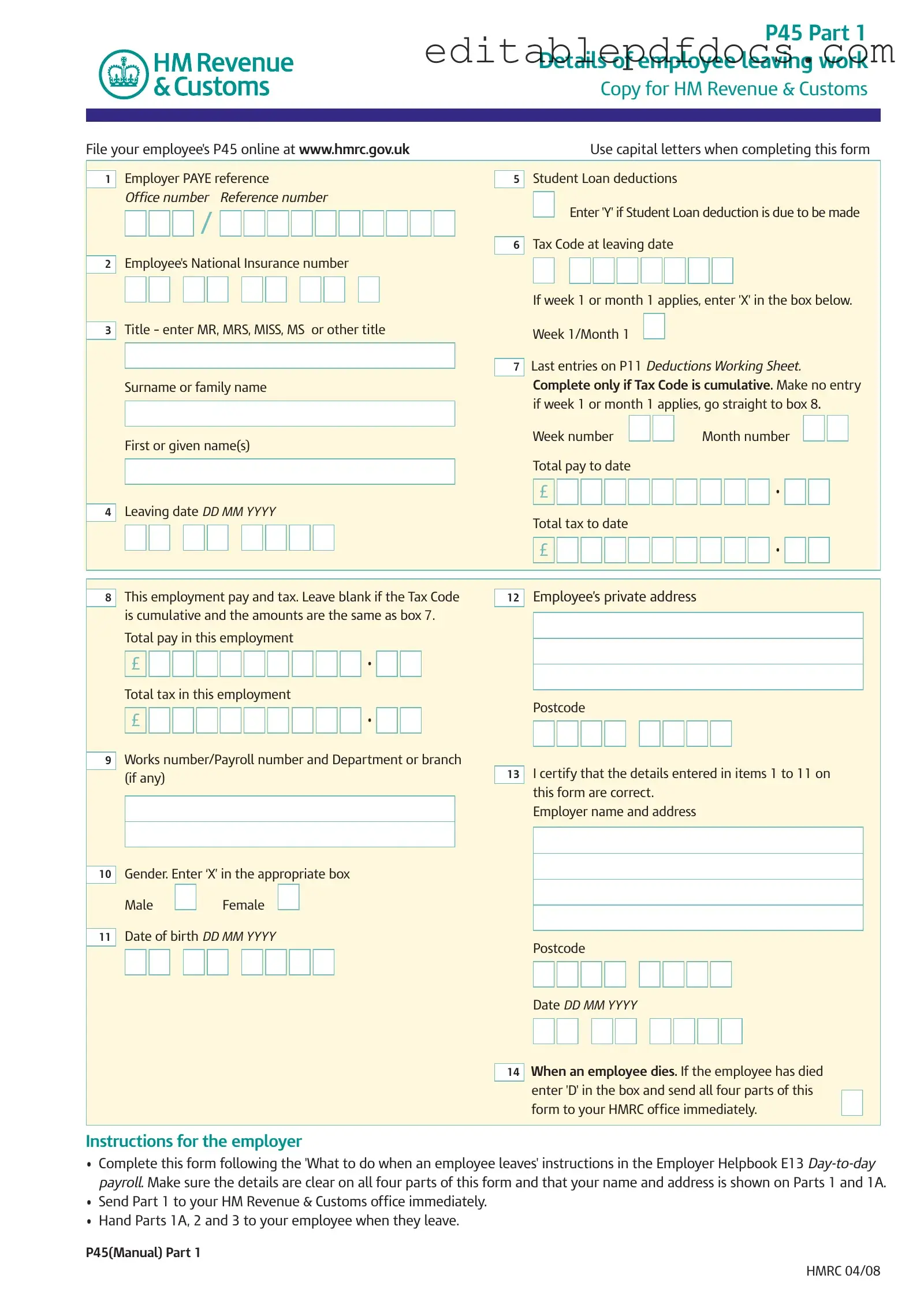The P45 form plays a crucial role in the employment landscape of the UK, serving as a formal record when an employee leaves a job. This document is divided into three parts, each designed for different stakeholders: the employer, the employee, and the new employer. Part 1 is submitted to HM Revenue & Customs (HMRC), while Parts 1A and 2 are handed to the employee, with Part 3 going to the new employer. Key details captured on the P45 include the employee's personal information, National Insurance number, tax code, and total pay and tax deductions for the employment period. The form also addresses specific scenarios, such as student loan deductions and the implications of leaving under a week 1 or month 1 tax code. Understanding how to correctly complete and manage the P45 is essential for both employers and employees to ensure accurate tax reporting and compliance. Moreover, the form provides guidance for employees on what to do next, whether they are moving to a new job, claiming benefits, or planning to become self-employed. Navigating the P45 process efficiently can help prevent unnecessary tax complications and ensure a smooth transition for all parties involved.
